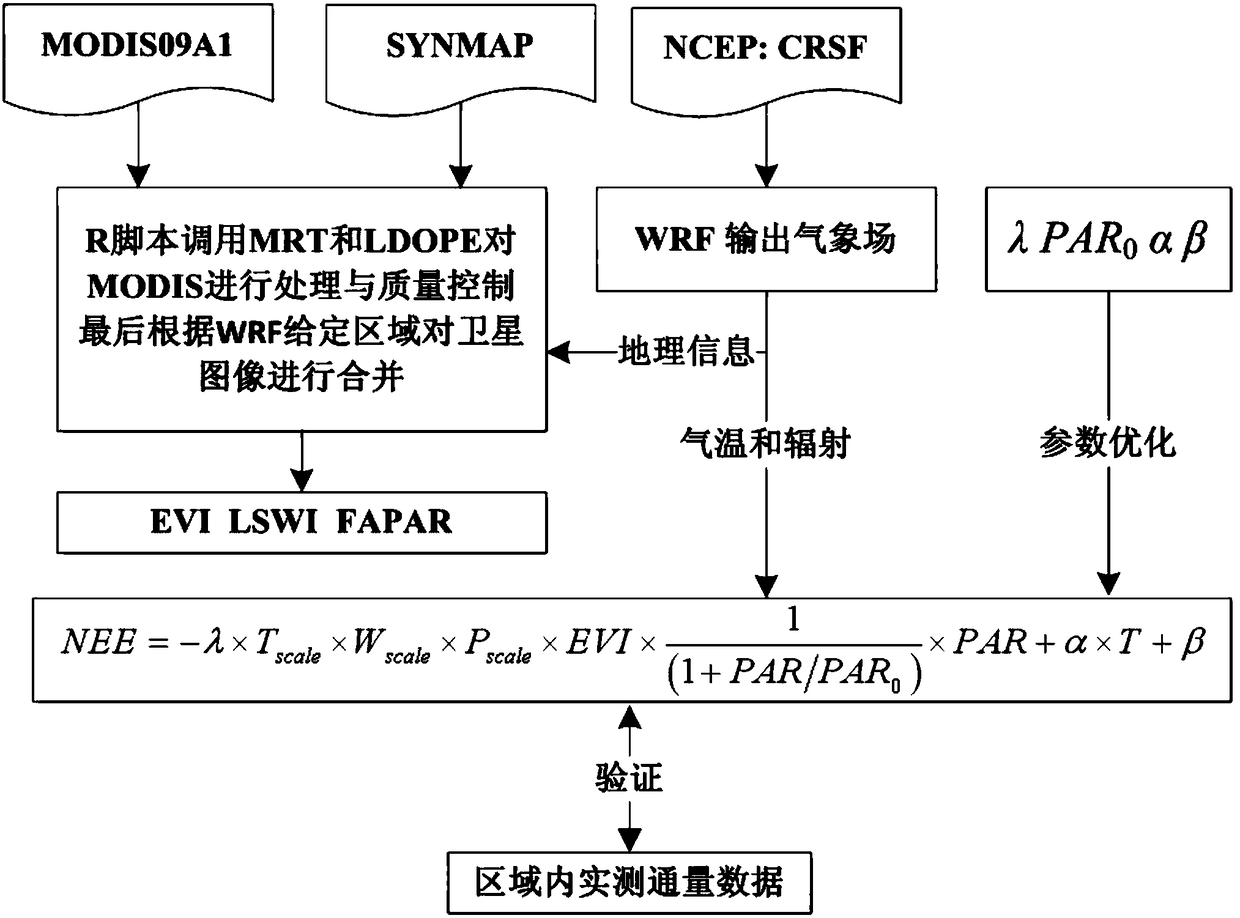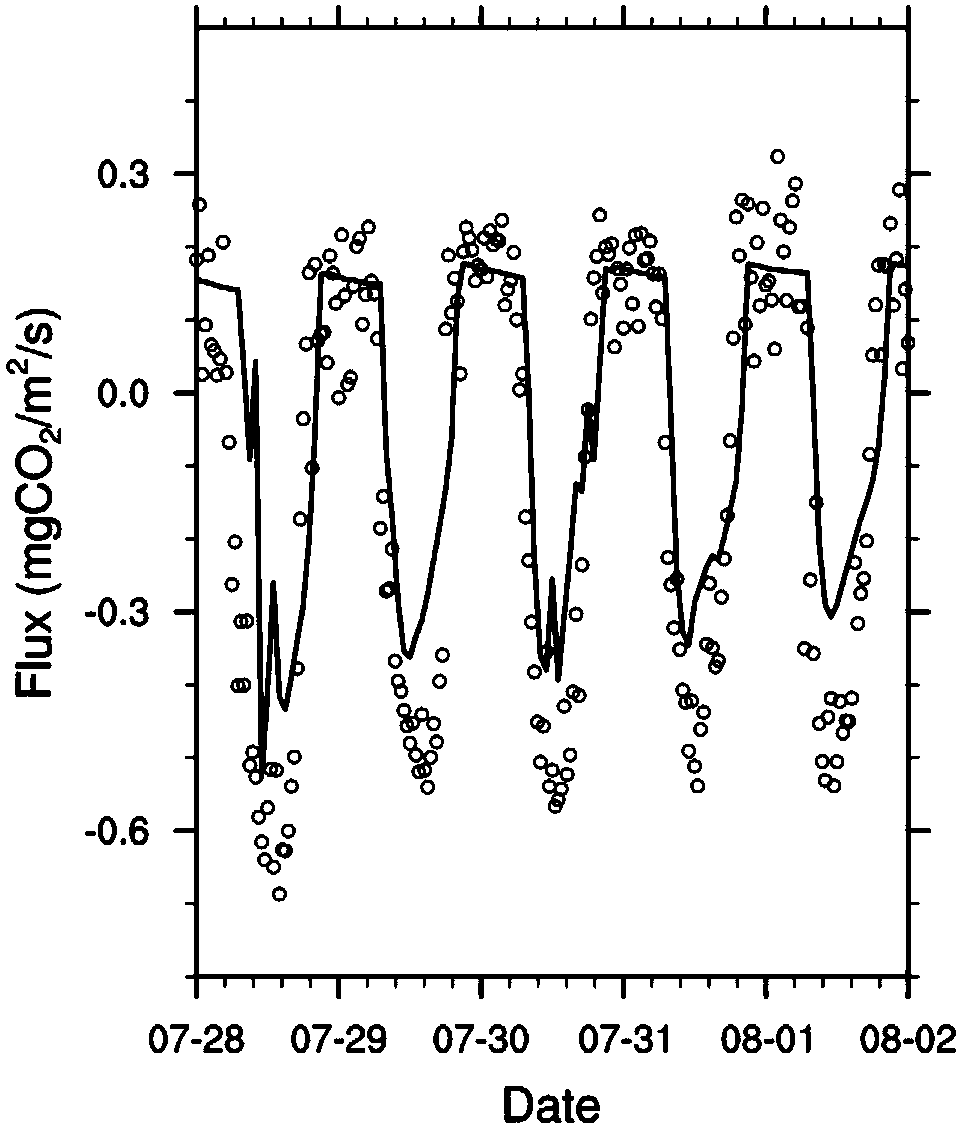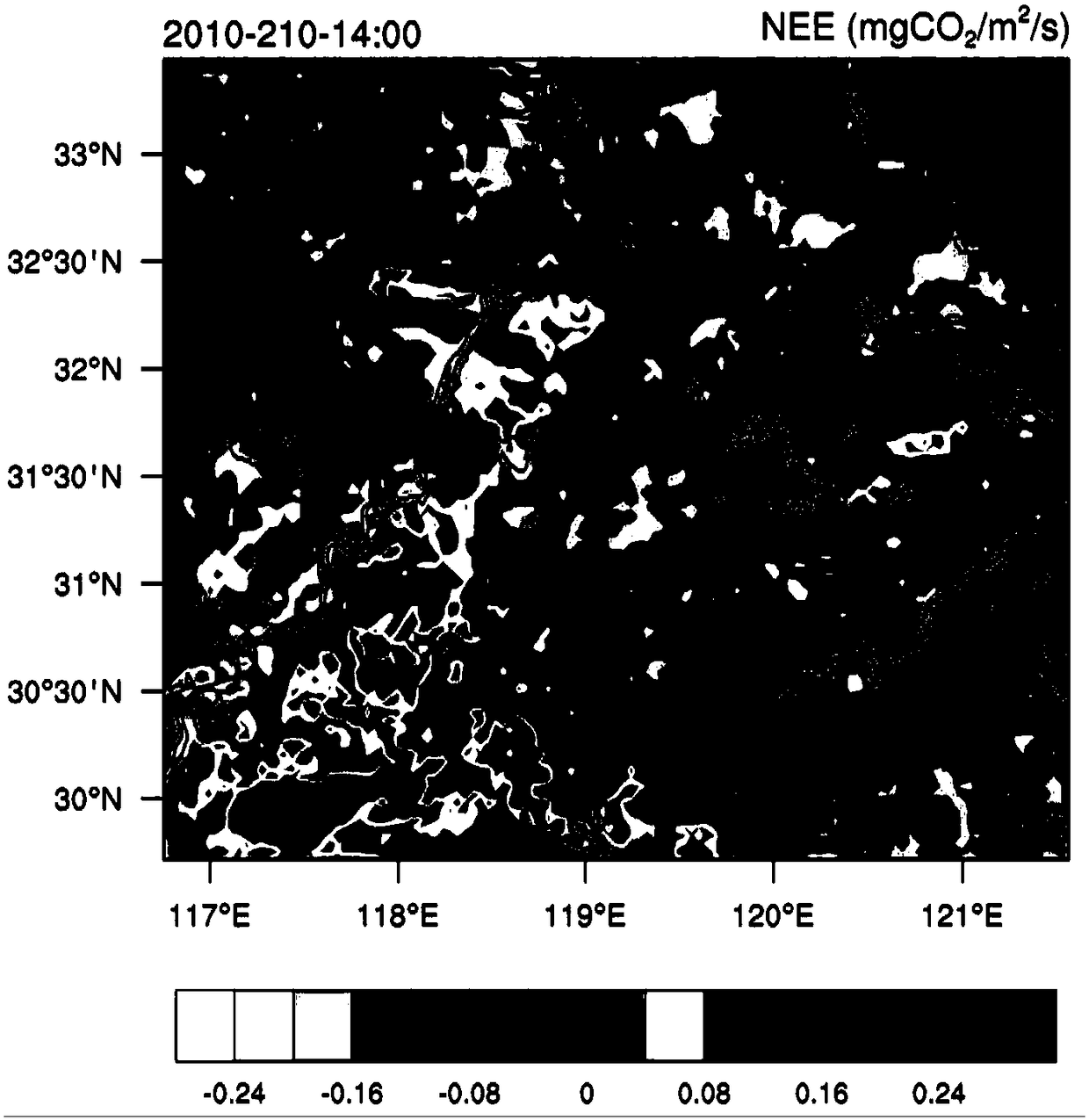Regional carbon flux estimation method based on remote sensing data
A carbon flux and data technology, applied in the field of regional carbon flux estimation based on remote sensing data, can solve the problem of unreliable GPP simulation
- Summary
- Abstract
- Description
- Claims
- Application Information
AI Technical Summary
Problems solved by technology
Method used
Image
Examples
Embodiment 1
[0030] Example 1: Taking the Yangtze River Delta region as an example, high-resolution spatial information, air temperature and downward short-wave radiation are obtained through WRF simulation (such as triple nesting, the innermost layer is the Nanjing region, and the resolution is 4km x 4km).
[0031] Surface vegetation index (EVI, LSWI) is obtained from MODIS satellite retrieval data. We use the 8d average land surface albedo product MOD09A1 on the MODIS sensor carried by the NASA Terra satellite, and its spatial resolution is 500m. The data of blue (459-479nm), red (620-670nm), NIR (841-875nm) and SWIR (1628-1652nm) bands are used to calculate the vegetation index. The changes of EVI and LSWI due to 8d interval are relatively stable. The vegetation index can be calculated by the following formula:
[0032]
[0033]
[0034] where G=2.5, C 1 = 6, C 2=7.5, L=1. ρ stands for the surface albedo of the corresponding band, and the subscripts nir, red, blue and swir st...
PUM
 Login to View More
Login to View More Abstract
Description
Claims
Application Information
 Login to View More
Login to View More - R&D
- Intellectual Property
- Life Sciences
- Materials
- Tech Scout
- Unparalleled Data Quality
- Higher Quality Content
- 60% Fewer Hallucinations
Browse by: Latest US Patents, China's latest patents, Technical Efficacy Thesaurus, Application Domain, Technology Topic, Popular Technical Reports.
© 2025 PatSnap. All rights reserved.Legal|Privacy policy|Modern Slavery Act Transparency Statement|Sitemap|About US| Contact US: help@patsnap.com



